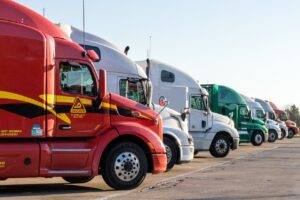
Most commercial motor vehicles in the state of New York, and in many other states, must have an electronic logging device (ELD) installed by law. These ELDs capture a limited amount of data electronically, storing it for later access. The devices were deemed constitutional by New York’s highest court, and they can be used as evidence in cases brought by truck accidents lawyers. There are also a variety of other electronic systems that are often placed in commercial vehicles to track everything from positioning to vehicle performance and more.
What are these devices and how are they used to sort data collected while commercial vehicles are in transit?
What is an ELD?
What are electronic logging devices, how do they sort information, and how can they be used in truck accident cases? Electronic logging devices are data collecting machines that are primarily used for tracking hours of service (HOS), among other information. The machines use global positioning system (GPS) technology that is connected to the engine of the truck to track when the truck is moving and where it is going.
ELDs can be used to track a wide range of electronic data on a commercial vehicle, including the vehicle’s:
- Engine starts and shutdowns
- Location and route
- Current and past speeds
- Miles driven in a given period of time (generally 24 hours)
- Total drive time
- Habits of hard braking, swerving, speeding, and other maneuvers
- Length of time while idling
- Vehicle diagnostics
The machines collect and store this data in a such a way that makes it very hard to falsify or tamper with the data, so the data is generally regarded as accurate unless something has been shown to be malfunctioning in the device. It is fairly simple to conduct audits and compliances reviews on the data to look for specific bits of information about the driver’s habits during any given trip. Since the devices are effectively forgery resistant, they can be presented as evidence in trials for accidents involving the commercial vehicles they are installed in.
How Electronic Logging Devices Collect and Sort Data
Many ELDs work by plugging the device into the vehicle’s onboard diagnostics (OBD) port, which pulls data directly from the engine. Many of these devices also have GPS trackers that determine the location of the vehicle at all times. The devices provide “live-to-the-second” information on the vehicle, as opposed to data that is only updated every few minutes. This allows for real-time data to be collected and stored. ELD devices can also transmit data to fleet managers using either cellular service or via Bluetooth to an application installed on a mobile phone.
Other Devices Used by Commercial Vehicles to Collect and Sort Data
Some of the other devices and technology commercial vehicles are often equipped with include:
- Telematics devices: similar to ELDs (but not required by law), these devices collect information that includes vehicle use, maintenance requirements, automotive servicing, location, and more. The devices connect to the vehicle’s onboard diagnostics (OBD) or CAN-BUS port with a SIM card and use wireless networks to transmit data.
- OBD systems: these systems monitor and report vehicle performance. They often regulate car systems and alert drivers or fleet managers to problems that occur. The data they track includes engine health, emissions, and other diagnostic information.
- Fleet management systems: these (often GPS-based) systems allow for the sorting, analysis, and visualization of data related to commercial vehicle utilization, maintenance schedules, fuel consumption, and more. They can also be used to analyze driver behavior.
Can ELDs and Other Devices Be Used in a Lawsuit
Electronic logging devices and the data they record can sometimes be used in truck driving accident cases. Because the systems are used to monitor the habits of drivers, including when they have rested, how long they have driven, the speed in which they were driving, and much more, they can often paint a picture of the state of the driver at the time of the accident. The data that is stored within these systems is impartial and can be used to ascertain the facts of the case. They can also be used to determine if the driver was violating any hours of services regulations, including:
- Limits on shift times
- Limits on driving times
- Weekly driving time limits
- The 34-hour restart: ensures that drivers have some consecutive time off to rest and refresh
- Required rest breaks
- Speed limits
The devices can also be used to tell if the driver used their brakes suddenly, swerved while driving, and many other bits of data that indicate negligence or recklessness while driving. While the data collected and stored by commercial vehicles will not guarantee that a case will be determined in your favor, it can be a powerful tool to help you get compensated if you or a loved one has been the victim of a trucking accident.
Get a Truck Driving Accident Attorney
At Morelli Law, our trucking accident attorneys are well-versed in the data collected by commercial vehicles and how it can be used to help you during your case. We specialize in fighting back against the big companies that try to do everything in their power to avoid giving families and victims of accidents the compensation they deserve. The truck driver is not always the only one at fault when an accident occurs. The trucking company and the manufacturer of the commercial vehicle can also be held liable. We can help you get to the bottom of who has caused the accident while getting you and your family the justice you deserve.
Get in touch with the truck accident lawyers at Morelli Law by calling or sending us a message online today.



